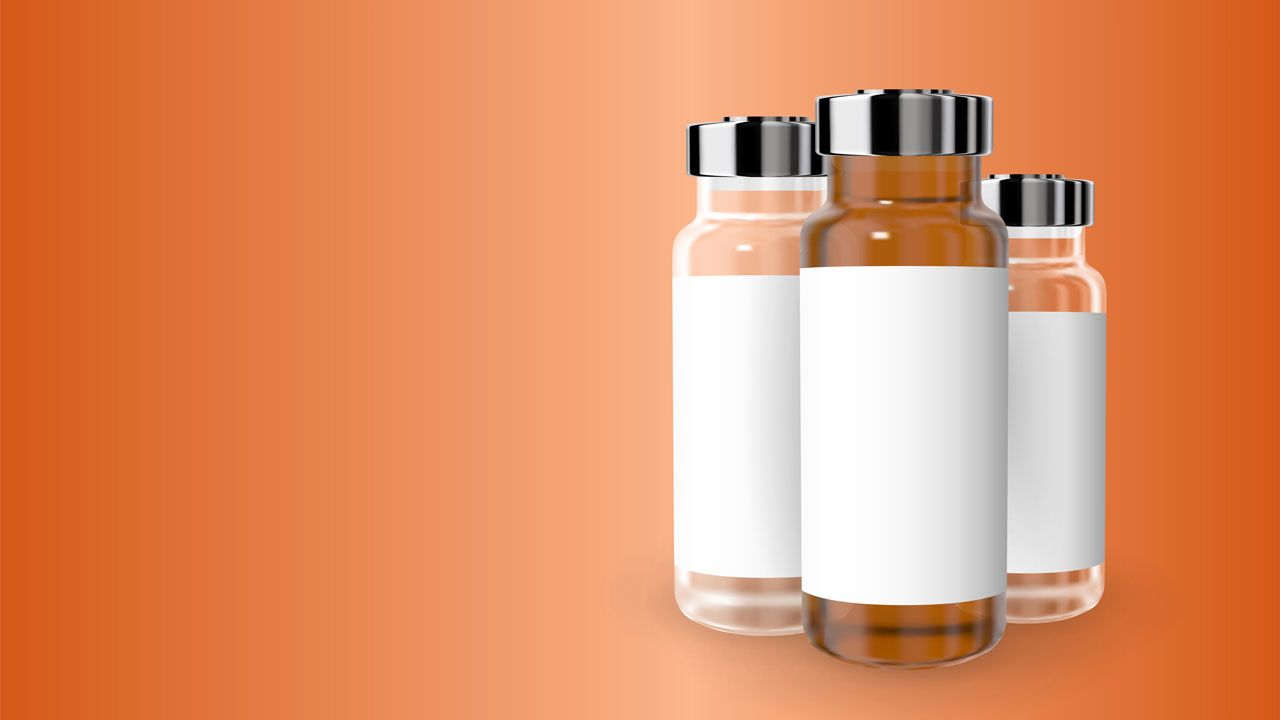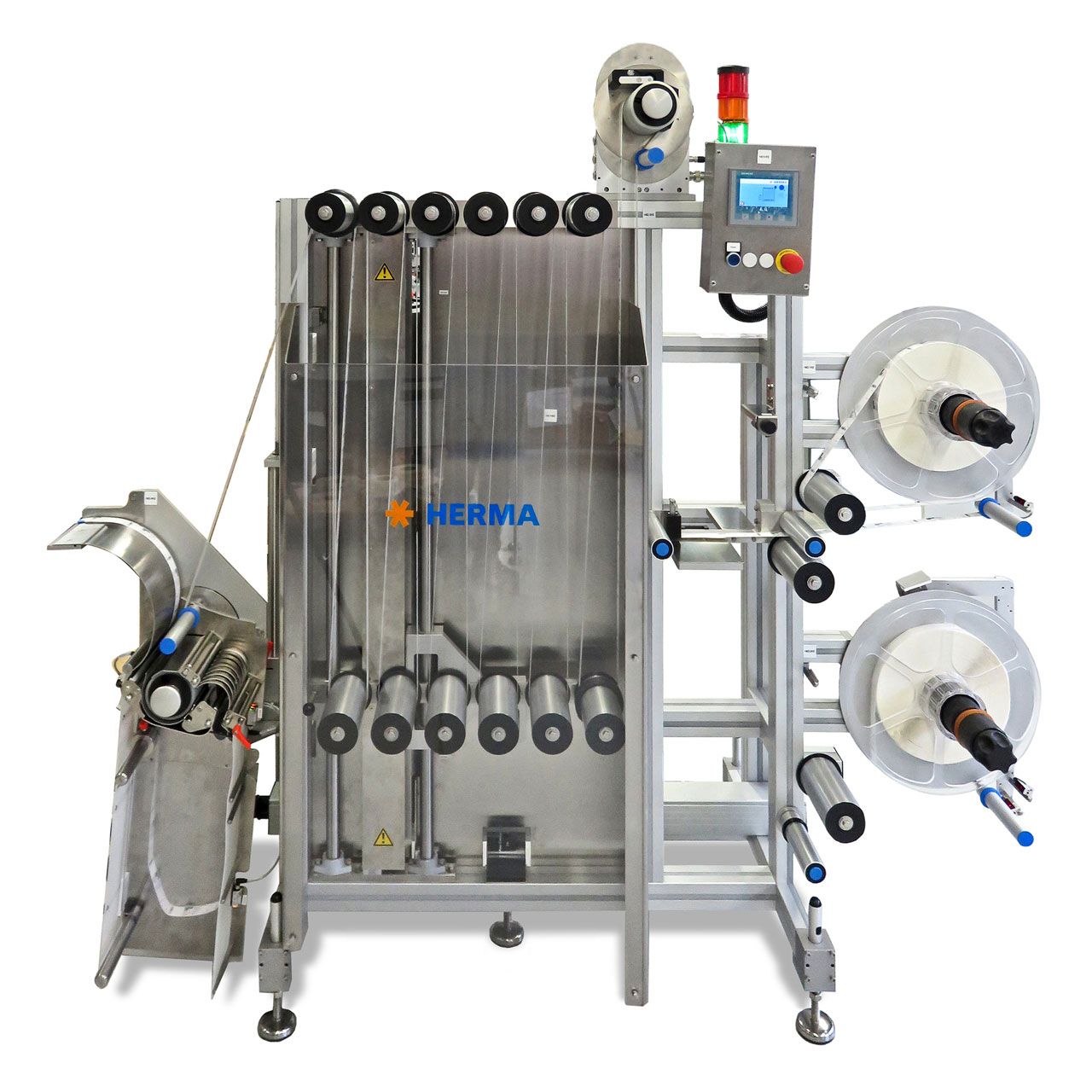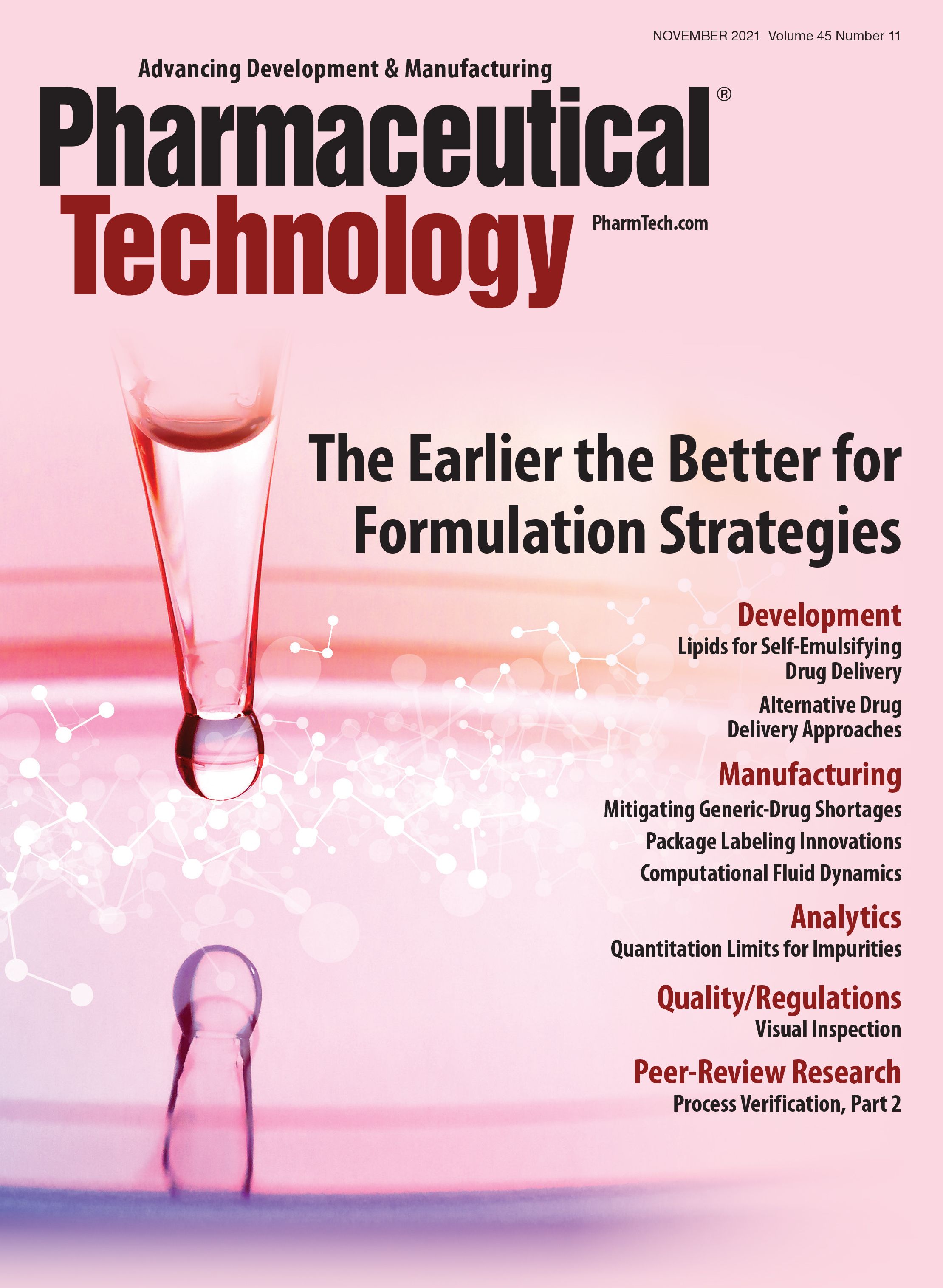Labeling Efficiently
Machine and material innovations yield more efficient, sustainable processes for pharmaceutical packaging, including vaccine vials.
Vitaly/Adobe.Stock.com

Labeling equipment and materials continue to evolve with onboard serialization and inspection capabilities, adoption of radio frequency identification (RFID) technology, ever-improving performance and speed, and higher levels of connectivity that include remote access for troubleshooting, servicing, and training. Materials offer better performance as well as sustainability advantages.
Demand for labelers is strong for both new installations and line upgrades. “Labelers and Related Equipment” is among the top six categories of new equipment purchases for the pharmaceutical industry, according to a report published in November 2020 by PMMI, The Association for Packaging and Processing Technologies (1).
Forces driving purchases of labeling equipment include automation, growth in self-administration of medication and personalized pharmaceuticals, digitalized packaging that communicates directly to patients, the need for flexible production, and sustainability concerns (1).
According to the report, built-in connectivity is important, and remote troubleshooting is becoming a necessity. As requirements for traceability and serialization take hold, the need for efficient labeling operations grows. The report notes, “Facilities are increasingly leveraging the Internet of Things (IoT), connecting equipment with computers and devices to maximize productivity, control operations, and maintain quality. Companies are finding that they need these systems more within the serialization process, and this trend is expected to continue as more regulations get implemented and more tracking data is required throughout the supply chain” (1).
Vial labeling
Speed, accuracy, quick changeover, and flexibility are important attributes for labelers on today’s pharmaceutical packaging lines. Designed for COVID-19 vaccine packaging applications, the modular, servo-driven VR-72 labeler from WLS, a ProMach product brand, can run faster than 600 vials/min. The flexible, continuous-motion unit applies wraparound, pressure-sensitive film or paper labels to any cylindrical container and accommodates different code printing methods and inspection systems.
Products enter the labeler via a synchronized feedscrew and are held in place during label application by a vertical trunnion roller assembly for accurate, repeatable placement. A vacuum drum label dispenser holds each product at three contact points to minimize label skew. The continuous motion of the vacuum drum maintains tension on the label web to minimize web break and expand label and web material options. WLS’s patented label reconciler automatically tracks and removes out-of-tolerance labels from the vacuum drum before application. Options include redundant label heads to eliminate downtime and US Code of Federal Regulations (CFR) 21 Part 11 compliance with audit trail, domain authentication, and various types of data collection (2).
Maximizing speed and uptime for vaccine vial labeling is the goal behind an upgrade of the high-speed HERMA 132M HC wraparound labeler. Designed for efficiency, the wraparound labeler features digital position indicators and format sets that provide tool-less changeover and integrated control for the entire machine, including the camera and printer. The labeler now can operate continuously via retrofittable EasySplicer and EasyCutter modules, which make it possible to change or remove label and liner reels without stopping the machine and halting production, as shown in Figure 1. Considering that reels require replacement approximately every 10 minutes, the result is reduced downtime and significantly improved output.
Figure 1. Modules on a high-speed wraparound labeler (HERMA 132M HC) make it possible to change or remove label and liner reels without halting production. Figure is courtesy of HERMA.

The EasySplicer module arranges two label reels vertically, one above the other. The active label web is guided over a splicing table, where it is fixed at the end of the label web. Because the unit is equipped with a buffer, an operator can splice the new label web to the fixed web before the buffer runs out. Meanwhile, the EasyCutter module vacuums up the empty liner and chops it into shreds that are collected automatically and can be recycled. The add-on eliminates the need for manual removal of rewound backing paper (3).
RFID labels
As the deadline for unit-level serialization approaches, RFID is viewed as one way to carry data through the supply chain. RFID labels on vials, bottles, tubes, syringes, and devices can lock in select variable data while allowing other variable data to be updated through the life of the product. This technique simplifies inventory control and confirms product authenticity. However, applying RFID labels can be tricky. Label paths must be designed to prevent damage to tags or antennas to ensure readability for the life of the product. This challenge has been overcome, and pharmaceutical manufacturers have a growing number of equipment options so RFID labels can be adopted with minimal disruption.
For example, WLS offers three choices: RFID-Ready labelers, RFID-Enabled label application systems, and RFID-Ready print stands. RFID-Ready labelers apply pressure-sensitive labels with embedded RFID inlays. The RFID labels are read, written (encoded), locked or unlocked, verified, applied to the product, and re-verified as needed. Options include variable data printing with vision inspection, rejected label reconciliation, and rejected product removal.
RFID-Enabled label application systems consist of dual label heads that feed a single applicator. The first label head releases a standard pressure-sensitive label onto the vacuum drum while the second label head centers and releases an RFID tag onto the label, so the vacuum drum applies an integrated tag and label. Prior to being married with the label, the tags are read, written, locked or unlocked, and verified. Once applied, the RFID label can be re-verified.
RFID-Ready print stands are designed to digitally print pressure-sensitive labels embedded with RFID inlays, providing an off-line solution for incorporating RFID labels with variable data print-ing or whole-label printing. The offline, on-demand unit makes it possible to adopt RFID labeling without altering or upgrading existing labelers. The high-speed RFID-Ready print stands incorpo-rate full-label vision inspection with rejected label removal and verification and also verify the printed label and the encoded RFID tag (4).
Digital label printing
Digital label printing provides quick turnaround, production planning flex¬ibility, real-time variable data application, and inventory reduction, supports multilingual label printing, reduces waste, and decreases costs associated with ordering and maintaining an inventory of pre-printed labels. Digital printing can be integrated with the labeler to create a printer/applicator. An integrated system from United Automation combines an Epson ColorWorks C7500 on-demand color label printer with robotic automation. The desktop label printer/applicator prints standard matte or glossy labelstock on-demand in full color, and a high-precision robot performs feeding and application functions. The desktop system allows pharmacies to upgrade from black to color labels to highlight warnings, logos, and branding on prescription bottles (5).
“Color not only enhances safety by enabling the inclusion of photo identification, color-coded warnings, and color-highlighted information but also helps improve readability and reduce errors,” says Andrew Moore, product manager, Commercial Label Printers, Epson America.
Although targeted to pharmacies, the systems can be integrated on pharmaceutical packaging lines. “The process is very similar to our prescription labeling applications,” explains Jeff Runge, project manager, United Automation. “An on-demand, color label printing solution allows companies the flexibility to incorporate color for safety, reduce errors, and implement overall process improve-ments,” adds Moore.
The printer/applicator model with a six-axis robot offers expanded functionality: printing, loading, labeling, peel labeling, inspection, verification, and unloading. Capable of printing and applying up to 600 unique color labels/hr, the first-in/first-out flow and inspection and verification technologies ensure each bottle receives the correct label. The system is flexible enough to handle wraparound or folded labels and bottles of varying heights and diameters. Label height is adjusted dynamically based on bottle specifications, and label position is verified at two points in the cycle (5).
In many printing processes, color comes with an upcharge. However, Moore, says, “The cost of ink does not vary by color for Epson. So, there is no impact to cost, [which] makes using color even more attractive.” Durable pigment-based inks result in smudge-proof labels that can withstand exposure to gamma sterilization and chemicals such as hand sanitizers. “The [return on investment] is evident in a very short period of time,” concludes Runge.
Auxiliary equipment
Auxiliary equipment also must be considered. For cold-chain products like temperature-sensitive vaccines, serums, and tests, labeling can be a challenge because condensation affects adhesion. Yet conventional conditioning methods can mean hours sitting outside the freezer. An automatic vial dryer from Garvey removes condensation in as little as 15 minutes. The patented, pressure-less loop with a high-volume, laminar-flow accumulator dries lyophilized or liquid-filled vials ranging from 2 mL to 50 mL at rates up to 500/min and feeds them in single file into a labeler or inspection machine at up to 900/min. A space-saving, modular design and various infeed and outfeed options mean the system can be configured as needed (6).
Label innovations
With new materials and designs constantly arriving on the market, pharmaceutical manufacturers have an ever-growing array of labelstock options. To make it easier to identify the proper material, FLEXcon has organized its PHARMcal line according to application requirements, such as con-tainer diameter, cover-up capability, extreme storage conditions, tamper evidence, and secondary blood bag labeling (7).
Another application-oriented product, the Pharma-Tac Plus label for infusion bottles,
Figure 2. A label that presents product information in various languages (Schreiner MediPharm, Pharma-Tac Plus) facilitates clinical studies. Figure courtesy of Schreiner MediPharm.

was devel-oped by Schreiner MediPharm to simplify international clinical trials. The label combines a mul-tipage booklet label with Schreiner MediPharm’s hanger label, creating ample space for compre-hensive product descriptions in multiple languages (see Figure 2). The paper booklet label firmly adheres to the base label and can be opened and reclosed via a tab. The customizable combination can be adapted to various vial and bottle sizes, and the number of booklet pages can be tailored to suit specific requirements (8).
Sustainability ranks as another important consideration, pushing the adoption of source reduction and use of recyclable, recycled-content, and/or renewable materials. Two paper-based release liners from Mondi offer a renewable material plus source reduction or recycled content. EverLiner labelite release liner is a lightweighted 47 g/m2 alternative to standard 58 g/m2 glassine. The Ever¬Liner M R release liner is said to be the first to use recycled base paper. The machine-glazed paper with 70% Forest Stewardship Council-certified recycled content reduces the amount of virgin fiber con-sumed. “Our aim is to create sustainable alternatives with no need to change the silicone system in order to offer products that are effective in usage, work for our customers, and ultimately help pro-tect the environment,” said Andrea Lackner, R&D director Release Liner at Mondi, in a press re-lease (9).
References
1. PMMI, The Association for Packaging and Processing Technologies, “Pharmaceutical & Medical Devices Trends & Opportunities in Packaging Operations,” Report (November 2020).
2. WLS, “WLS Introduces VR-72 Labeler for COVID-19 Vaccine Packaging,” Press Release, Aug. 6, 2020.
3. HERMA, “HERMA US Introduces Continuous Labeling Capabilities for Premium Pharma Wraparound Labeler,” Press Release, March 9, 2021.
4. WLS, “WLS Introduces RFID Labeling Solutions,” Press Release, July 15, 2021.
5. Epson, “Epson Partner United Automation Creates Print-and-Apply Label Applicators for Pharmacy Bottle and Bag Labeling,” Press Release, Jan. 26, 2021.
6. Garvey Corp., “Garvey’s Pharmaceutical Solutions Help COVID-19 Vaccine Makers Protect Potency, Increase Throughput,” Press Release, Jan. 29, 2021.
7. FLEXcon, “FLEXcon Announces Global Launch of New PHARMcal® Portfolio for Pharmaceutical Labeling,” Press Release, Aug. 24, 2021.
8. Schreiner MediPharm, “To Simplify International Clinical Trials, Schreiner MediPharm Equips Hanger-Label for Infusion Bottles with Booklet,” Press Release, Aug. 5, 2021.
9. Mondi, “Mondi Expands Release Liner Range with Launch of Two New Paper-Based Sustainable Everliner Products,” Press Release, Feb. 11, 2021.
About the author
Hallie Forcinio is packaging editor at Pharmaceutical Technology, editorhal@sbcglobal.net.
Article details
Pharmaceutical Technology
Vol. 45, No. 11
November 2021
Pages: 42–44
Citation
When referring to this article, please cite it as H. Forcinio, “Labeling Efficiently,” Pharmaceutical Technology 45 (11) 2021.

Drug Solutions Podcast: A Closer Look at mRNA in Oncology and Vaccines
April 30th 2024In this episode fo the Drug Solutions Podcast, etherna’s vice-president of Technology and Innovation, Stefaan De Koker, discusses the merits and challenges of using mRNA as the foundation for therapeutics in oncology as well as for vaccines.